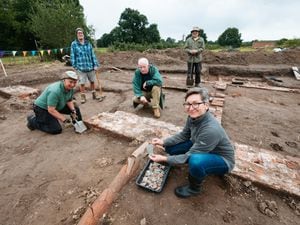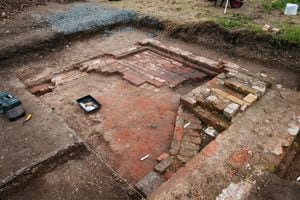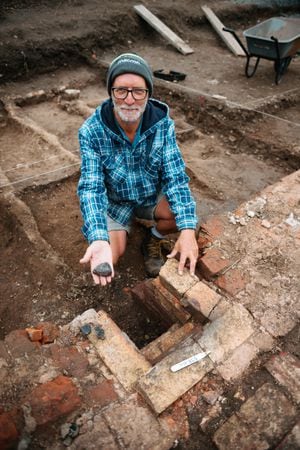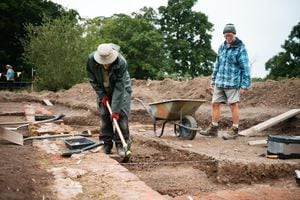Scandal and extravagance: what a 10-day dig at Attingham has revealed about estate's past
Another year of digging at Attingham Park has uncovered a glimpse into the estate's scandalous past.

Over the last 10 days, visitors to the National Trust property may have noticed archaeologists working to expand a site first discovered five years ago.
Remains of an elaborate, neoclassical-style summerhouse were first discovered in 2018, during work to create new service routes. Three years later, the team unearthed an ornamental pool.
In 2022, a survey of the area revealed underground anomalies consistent with the presence of one or more buried buildings.
The discoveries indicated the site was a former, extravagant, private pleasure ground built in the early 1800s but soon abandoned.
In last year's excavations, staff and volunteers discovered the remains of a second building, around double the size of the summerhouse, and a curving boundary wall.
Initially, the team thought the second building was likely to be a servants building, that would have accompanied the elaborate summerhouse.

But the most recent dig has suggested the story of Attingham's secret garden has completely changed.
Viviana Caroli, National Trust Archaeologist, explained: "We have found evidence of flues and stoves running through the walls to heat the building itself.
"Now we think this building is a heated garden room - one used to propagate plants and keep pretty plants in. What we'd call nowadays a greenhouse.
"We can't tell for sure at this stage if it was a full glass house, but it's a fantastic building. At the moment it's about eight metres by 14 metres long but we haven't fully excavated it yet. We expect it to be around 20 metres long."
The ornate pleasure gardens date back to between 1807 to 1815 when Attingham was home to Thomas Noel Hill, 2nd Baron Berwick.
Thomas, and his highly-fashionable wife Sophia Dubochet, were known for their extravagance. By the late 1820s, the couple were forced into bankruptcy auctions to pay off their mountains of debt.
Not long after, the garden was abandoned.

Viviana said: "There's almost nothing about it, the historical records are very scarce. There are only a few records that mention it, but no records of accounts, the labour or materials that were used to build the buildings.
"This was a period where Thomas lived a very extravagant life and pushed the family to ruin, we do have records of his two brothers begging him to leave the country. They didn't want to lose the family estate.
"I would not be surprised if this complex was a great sense of shame for the family, and if that was the reason it was forgotten and abandoned.
"We are now in the stage of writing a part of the history of Attingham's garden which has been completely forgotten for 200 years."

As well as National Trust staff, the dig was supported by a passionate group of volunteers from the Shropshire Archaeological and Historical Society.
Viviana added: "We could never have done this without the support of the volunteers. As with the dig at Shrewsbury Castle, it's wonderful to see how people in Shropshire are really embracing the local history and heritage of the place."
Whilst the dig comes to an end on Thursday weather permitting, the site will remain open for visitors to explore for the next few weeks.





